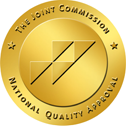When people think of drug abuse, many would name heroin or cocaine, not Vicodin, Oxycotin or Percocet. But prescription drug abuse has grown in popularity in recent years, second only to marijuana. Prescription Drug Abuse is defined as using a prescribed medication purely for the feeling it elicits, using in ways not prescribed or using without a prescription at all.
Who becomes Addicted to Prescription Drugs?
The addiction may start from a genuine illness or injury where the prescription was initially necessary and not harmful for a short period of time when used as prescribed. Some people fall “accidently” into addiction either because the tolerance for the medication no longer eases their condition or because they assume that the prescription is harmless.
Prescription drug addiction often befalls the elderly. Misunderstanding the dosage or overdosing because of confusion or forgetfulness happens all too often. Many senior citizens are left alone or undersupervised; there is no one there to help look out for their best interest. A defensive about their drug use or change in behavior are the most common signs in prescription drug abuse in seniors. Encouraging them to bring all their prescriptions to their doctor’s appointments can help alleviate concern as well as head off any abuse whether intentional or unintentional.
The addiction of prescription drugs is most relevant in young adults, between 18 and 25. Most common are the abuse of pain killers, sedatives and depressants. It appears that the growth in this abuse is due to the ease of accessibility of prescription medications. The drugs are usually given by a friend or relative to the user. Prescription drugs are often times seen as not harmful, since initially they were prescribed by a doctor and are not illegal such as cocaine and heroin. However, prescription medication can prove fatal if not supervised by a qualified medical professional.
Signs of Prescription Drug Addiction
Those addicted to prescription drugs will show the signs of addiction and dependency similar to an illicit drug addict or alcoholic. They will build up an increased tolerance for the drug and withdrawal symptoms will appear if doses are missed; they will continue to use the drug even after the issue it was prescribed for has ended. The abuser may remove themselves from family and friends and may have work and financial problems. Mood and behavior changes will occur, including secretive or deceitful behavior to acquire the drug and hostile, agitated or anxious behavior if they are not able to obtain the drug.
Prescription Drug Abuse Rehab
In the same way that an individual with a heroin or cocaine addiction needs to journey through the physical withdrawal, so does a prescription drug abuser. An inpatient drug treatment program will provide the best chance for a positive outcome. Once the drug addict is ready for rehabilitation, here are some things to look for in a treatment center: qualified facility with highly trained and educated staff, holistic healing options and programs that specialize in drug addiction. Your physician or local medical center should be able to refer you to a comprehensive behavioral health facility.




